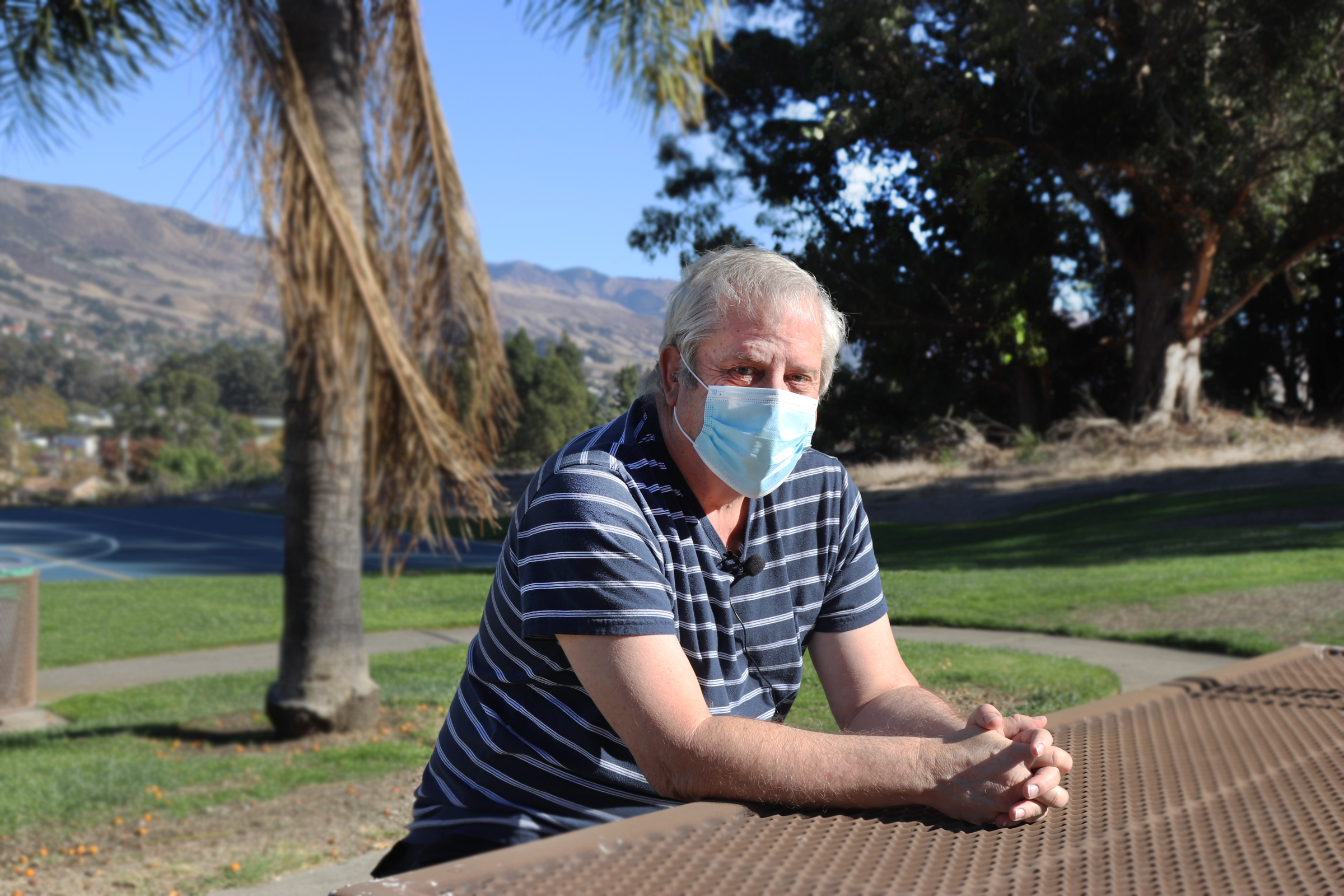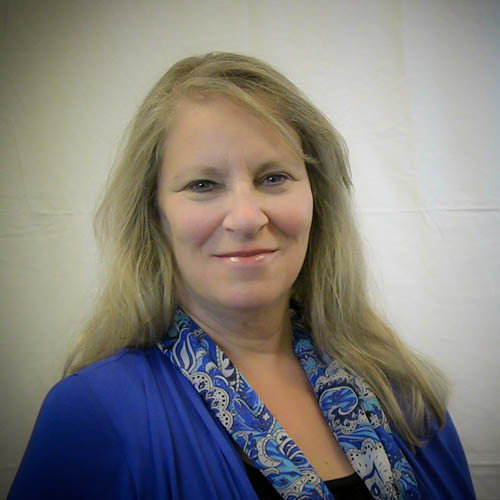
My COVID Story: John Porter, San Luis Obispo
Author: Joint Information Center
Date: 2/1/2021 3:30 PM
This story is part of a series highlighting the impact that COVID-19 has had on SLO County community members.
Disclaimer: This information may be outdated. For the most recent guidance and case details, visit SLOPublicHealth.org/covid19.
As COVID-19 cases increase in San Luis Obispo County, more people may contract the virus and some could get seriously ill. To help shed light on the different ways COVID-19 is affecting people in SLO County, the County Public Health Department is asking for anyone who contracted the virus to consider sharing their story.
SLO County's second story in the series comes from John Porter, a San Luis Obispo resident who tested positive for COVID-19 in March of 2020. This is his story:
“Each morning they would ask, ‘Do you know your name? Do you know where you are?’ They would also ask me the date and I would say, ‘Who cares what date it is? I’m on vacation.’
The first thing I remember in the ICU is when I suspect I was in the waking-up process. I was having some pretty vivid dreams and in those dreams, they had transported me down to Santa Ynez, to a hospital down there. Now I realize there is no hospital in Santa Ynez and I knew that. But that is where I believed I was. And when I think about the room that I was envisioning at the time, it was actually a hotel I had stayed at in Spain once upon a time.
Little did I know I had been on a ventilator for 12 days.
Before that, I remember getting sick. It started out as a scratchy throat, coughing a little bit. But over the next five days it developed into what felt like the worst flu I had ever had. I finally got a chance to get into the doctor and get a test. They called me up the next day and confirmed that, yes, it was COVID.
I suspect I probably got it on a trip. I was 65 when I caught it, back in March, and was a pilot, flying business jets for a living. I had flown twice in March, once to Washington, D.C., once to Arizona. I suspect I caught it then, though I don’t know for sure. It could have been at the grocery store, for all I know.
Several days after I had been sick, my wife noticed my color had changed. I was still responsive, I was OK, but I felt really bad. So she called Public Health. I remember it was like five minutes until 5 p.m. and they said, ‘We’re sending over non-emergency transport. Which hospital do you want to go?’
The next three days or so I was OK. The hospital staff even talked to my wife about sending me home because I was doing so well. The next call she got was about 7 a.m. the next morning, on April 1 -- April Fool’s Day. They told her I had crashed over night and they had put me on a ventilator. Then they asked, ‘If he codes, do you want us to resuscitate him?’ Now imagine your loved one getting that phone call.
That started those 12 lost days. Of course, I believed I was on vacation, so it was harder on my wife and my family than it was on me. They were the ones who had to wait and watch, and worry.
When I finally came to, I had been immobile for 16-17 days. I physically just couldn’t move. I could move my arms some, wiggle my toes – but had no strength at all. The blankets on me felt like they weighed a ton. It took a while to get everything working again. They helped me stand up the first day. The next day I could take a step or two. Then finally with the walker, I could get to the front door of the unit.
While I was there, I could hear constant coughing coming from neighboring rooms, and gurneys coming and going all day long. By then, several other residents were starting to get ill and an outbreak at CMC had begun. The staff was very busy.
But I have to give so much credit to the hospital staff who were caring for me. I was one of the first patients they had. They told me later that they had read early positive reports of turning patients over into the prone position, out of Germany. So they were trying that at the time, they were really just trying anything they could. And I think that their early action saved my life.
The thing I’d like people to know about this virus is that it‘s real. The argument I’ve heard recently is, ‘Well, you know, I might get hit by a bus tomorrow.’ And well, you might be. I don’t know. But you mitigate the risk. You know, before you jaywalk across the street, you look both ways, right? And this, I think, is the same thing. Wearing a mask is not a big deal. And trust me, you don’t want to get it."
Have a COVID-19 story that you’d like to share? We’d love to hear it. Submit it to [email protected].
A medida que aumentan los casos de COVID-19 en el condado de San Luis Obispo, más personas pueden contraer el virus y algunas pueden enfermarse gravemente. Para ayudar a arrojar luz sobre las diferentes formas en que COVID-19 está afectando a las personas en el condado de San Luis Obispo, el Departamento de Salud Pública del Condado está pidiendo que cualquier persona que haya contraído el virus considere compartir su historia.
La segunda historia de la serie del condado de San Luis Obispo proviene de John Porter, un residente de San Luis Obispo que dio positivo por COVID-19 en marzo de 2020. Esta es su historia:
“Todas las mañanas preguntaban: '¿Sabes tu nombre? ¿Sabes dónde estás? '. También me preguntaban la fecha y yo decía:' ¿A quién le importa qué fecha es? Estoy de vacaciones.'
Lo primero que recuerdo en la UCI es cuando sospecho que estaba en el proceso de despertarme. Estaba teniendo algunos sueños bastante vívidos y en esos sueños, me habían transportado a Santa Ynez, a un hospital allí. Ahora me doy cuenta de que no hay hospital en Santa Ynez y lo sabía. Pero ahí es donde creía que estaba. Y cuando pienso en la habitación que estaba imaginando en ese momento, en realidad era un hotel en el que me había alojado en España una vez.
Poco sabía que había estado en un ventilador durante 12 días.
Antes de eso, recuerdo haberme enfermado. Comenzó como una garganta irritada, tosiendo un poco. Pero durante los siguientes cinco días se convirtió en lo que se sintió como la peor gripe que había tenido. Finalmente tuve la oportunidad de ir al médico y hacerme una prueba. Me llamaron al día siguiente y confirmaron que sí, era COVID.
Sospecho que probablemente lo compré en un viaje. Tenía 65 años cuando lo atrapé, en marzo, y era piloto y me ganaba la vida volando jets ejecutivos. Había volado dos veces en marzo, una vez a Washington, D.C., una vez a Arizona. Sospecho que lo atrapé entonces, aunque no estoy seguro. Podría haber sido en la tienda de comestibles, por lo que sé.
Varios días después de que me enfermé, mi esposa notó que mi color había cambiado. Seguía respondiendo, estaba bien, pero me sentía muy mal. Entonces llamó a Salud Pública. Recuerdo que eran como cinco minutos hasta las 5 p.m. y dijeron: "Estamos enviando transporte que no sea de emergencia. ¿A qué hospital quieres ir? "
Los siguientes tres días estuve bien. El personal del hospital incluso habló con mi esposa sobre enviarme a casa porque estaba muy bien. La siguiente llamada que recibió fue alrededor de las 7 a.m. de la mañana siguiente, el 1 de abril, el Día de los Inocentes. Le dijeron que me había estrellado durante la noche y me habían conectado a un ventilador. Luego preguntaron: "Si codifica, ¿quieres que lo resucitemos?". Ahora imagina que tu ser querido recibe esa llamada telefónica.
Eso comenzó esos 12 días perdidos. Por supuesto, creía que estaba de vacaciones, por lo que fue más difícil para mi esposa y mi familia que para mí. Ellos eran los que tenían que esperar, mirar y preocuparse.
Cuando finalmente recuperé, había estado inmóvil durante 16-17 días. Físicamente no podía moverme. Podía mover los brazos un poco, mover los dedos de los pies, pero no tenía ninguna fuerza. Las mantas sobre mí se sentían como si pesaran una tonelada. Me tomó un tiempo que todo volviera a funcionar. Me ayudaron a ponerme de pie el primer día. Al día siguiente podría dar un paso o dos. Luego, finalmente con el andador, pude llegar a la puerta principal de la unidad.
Mientras estaba allí, podía escuchar toses constantes provenientes de las habitaciones vecinas y camillas yendo y viniendo durante todo el día. Para entonces, varios otros residentes comenzaban a enfermarse y había comenzado un brote en CMC. El personal estaba muy ocupado.
Pero tengo que dar mucho crédito al personal del hospital que me cuidaba. Fui uno de los primeros pacientes que tuvieron. Más tarde me dijeron que habían leído los primeros informes positivos de que los pacientes volvían a la posición prona, fuera de Alemania. Así que lo estaban intentando en ese momento, en realidad solo estaban intentando todo lo que podían. Y creo que su acción temprana me salvó la vida.
Lo que me gustaría que la gente supiera sobre este virus es que es real. El argumento que escuché recientemente es: "Bueno, ya sabes, podría ser atropellado por un autobús mañana". Y bueno, podría serlo. No lo sé. Pero mitiga el riesgo. Sabes, antes de cruzar la calle imprudentemente, miras a ambos lados, ¿verdad? Y esto, creo, es lo mismo. Usar una máscara no es gran cosa. Y créeme, no querrás conseguirlo ".





